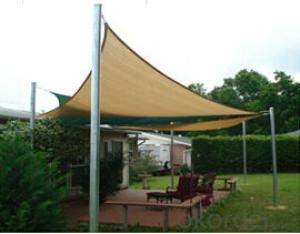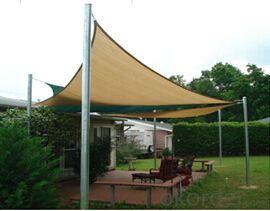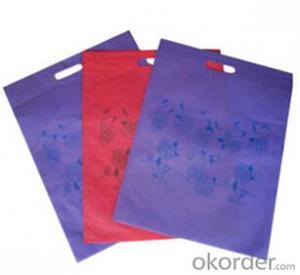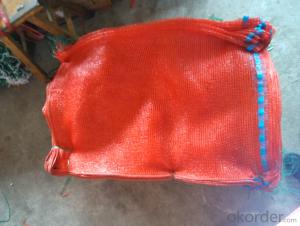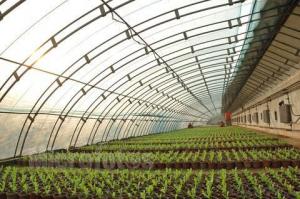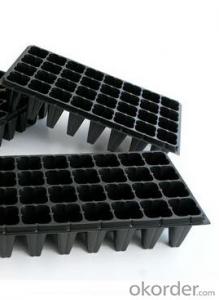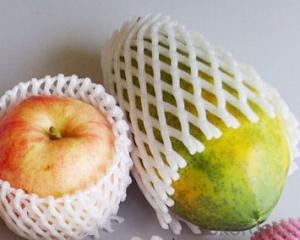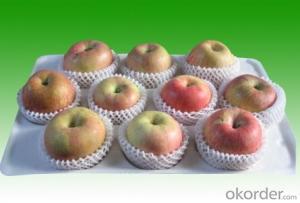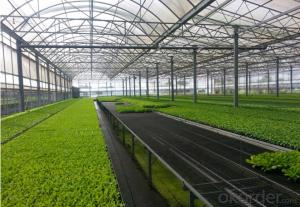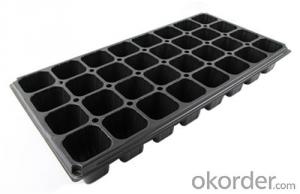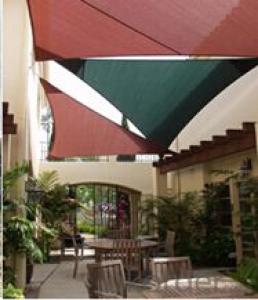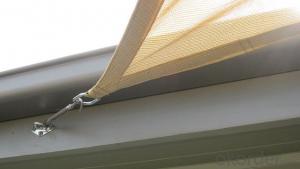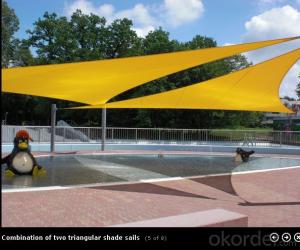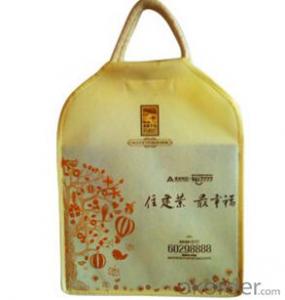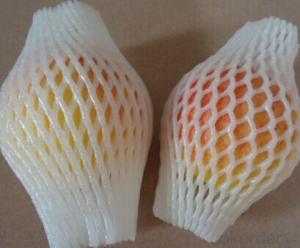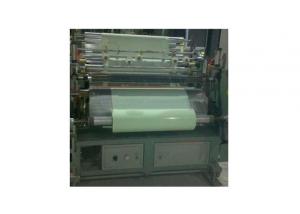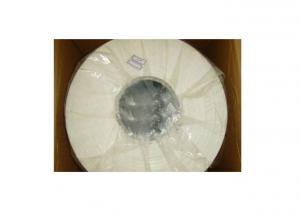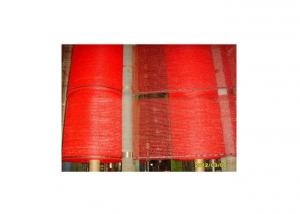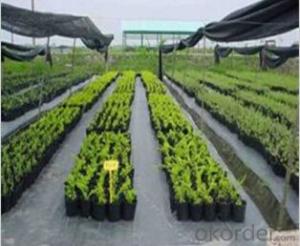Shade Cloth 185gsm for car parking
- Loading Port:
- Ningbo
- Payment Terms:
- TT OR LC
- Min Order Qty:
- -
- Supply Capability:
- 50000pcs pc/month
OKorder Service Pledge
OKorder Financial Service
You Might Also Like
High Quality shade cloth in finished size
Net weight: 160g/m2--320g/m2
Size: 3x3m, 3.6x3.6m 3x3m, 3x3x3m,5x5m,5x5x5m and so on UV block: 85-95%
Material: 100% virgin HDPE
Using life: 5 ~10 years Gurantee
Export market: Europe ,America,Japan, the Middle East ,Africa
Shape: Square, Triangle , Rectangle
Packaging & DeliveryPackaging Detail: Each piece of sail will be put into a pvc hadle bag with a color label inside, seveal pcs packaging into a paper carton with shipping mark.
Product Description of shade sail shade cloth:
Shade Sails protect and shade you from the severe effects of the sun's heay & UV rays. Some areas of the world call them Sun Sails.
They make a beautiful additions to your patio, backyard, or other outdoor areas.
Flying Sails is the perfect alternative to a traditional pergola, umbrella or covered porch. Floating and curvaceous, the make an attractive addition to any property, and with the right design,
- Q: I made a plastic bong and took 3 good hits of plastic and I'm just wondering what damage that can do
- 100% okorder
- Q: This question asks if there are specific health and safety regulations for dealing with agricultural plastic products.
- <p>Yes, there are health and safety regulations for handling agricultural plastic products. These often include guidelines for proper storage to prevent contamination, disposal methods to reduce environmental impact, and protective measures for workers to minimize exposure to harmful chemicals. Regulations can vary by country and region, but they generally aim to protect both human health and the environment. Compliance with these regulations is crucial to avoid fines and ensure the safety of agricultural workers and the public.</p>
- Q: How do you prevent ground cover plants from spreading into flower beds?
- One way to prevent ground cover plants from spreading into flower beds is by installing physical barriers such as edging or borders that create a clear boundary between the two areas. Regularly maintaining and trimming the ground cover plants, such as mowing or pruning, can also help keep them from encroaching on the flower beds. Additionally, applying a layer of mulch or weed barrier fabric around the flower beds can act as a deterrent and make it more difficult for ground cover plants to spread.
- Q: This question asks for a classification of plastic bags used for packaging agricultural fertilizers.
- <p>Agricultural plastic fertilizer bags can be categorized into several types based on their material, usage, and design. The main types include: 1. PE (Polyethylene) bags, which are the most common due to their durability and cost-effectiveness. 2. PP (Polypropylene) bags, known for their resistance to moisture and chemicals. 3. Multi-layer co-extruded bags, which combine different materials for enhanced strength and barrier properties. 4. UV-resistant bags, designed to protect the fertilizer from degradation under sunlight. 5. Recyclable or biodegradable bags, which are environmentally friendly options. 6. Valve bags, which allow for controlled pouring of fertilizers. Each type serves specific purposes and is chosen based on the fertilizer's properties and the handling requirements.</p>
- Q: How do you choose ground cover for a dry, rocky slope?
- When choosing ground cover for a dry, rocky slope, it is important to consider plants that are drought-tolerant and can thrive in poor soil conditions. Look for ground covers that have deep root systems, as they will help stabilize the soil and prevent erosion. Some suitable options include creeping juniper, Russian sage, sedum, and vinca minor. Additionally, consider using a combination of plants to add diversity and create a visually appealing landscape.
- Q: Are agricultural plastic products resistant to fungal diseases?
- Agricultural plastic products are generally resistant to fungal diseases due to their non-porous nature and ability to prevent moisture buildup, which is essential for fungal growth.
- Q: Before we had plastic in our homes...whether it be in Victorian England or Colonial Williamsburg, everything had such a nice feel to it. Now with plastic everywhere though, everything is ugly and depressing. Why don't we abolish plastic?
- Abolishing plastic would cause a lot of trouble... Plastic is the replacement for expensive things like wood. in Victorian England or Colonial Williamsburg, everything had such a nice feel to it Depends where you look, not every home was wealthy and full of nice furniture. Plastic offers furniture at a lower price, when the money is used somewhere else. north american culture has set your mind to dislike plastic, if it is plastic bags that kill turtles, or general liter like plastic bottles. Just keep in mind that there are many different plastics. Wooden furniture looks nice and feels nice, that is why it is more expensive. Plastic furniture is a back up.
- Q: This question asks about the various types of plastic pipes used in agriculture for water irrigation purposes.
- <p>Agricultural plastic water pipes used for irrigation come in several types, each serving specific purposes. PVC (Polyvinyl Chloride) pipes are durable and resistant to chemicals, making them ideal for long-term use. PE (Polyethylene) pipes are flexible, resistant to corrosion, and have high impact strength, suitable for both surface and subsurface irrigation. Drip irrigation pipes are designed for precise water delivery to plant roots, conserving water and reducing evaporation. HDPE (High-Density Polyethylene) pipes are strong and used for pressurized irrigation systems. Polybutylene (PB) pipes are known for their flexibility and are used in cold water irrigation systems. Each type is chosen based on the specific needs of the irrigation system, such as water pressure, temperature, and the environment in which the system operates.</p>
- Q: Can nursery trays be used for starting plants for restoration ecology?
- Yes, nursery trays can be used for starting plants for restoration ecology. Nursery trays provide an organized and controlled environment for germinating and growing plants, allowing for better monitoring and care of seedlings. This helps ensure a higher success rate in the establishment of plants for restoration ecology projects.
- Q: How does ground cover impact the overall maintenance of a garden?
- Ground cover can greatly impact the overall maintenance of a garden by reducing weed growth, retaining moisture in the soil, preventing erosion, and minimizing the need for frequent mowing or trimming. Additionally, ground cover can enhance the aesthetics of a garden, suppress pests, and provide habitat for beneficial insects.
Send your message to us
Shade Cloth 185gsm for car parking
- Loading Port:
- Ningbo
- Payment Terms:
- TT OR LC
- Min Order Qty:
- -
- Supply Capability:
- 50000pcs pc/month
OKorder Service Pledge
OKorder Financial Service
Similar products
Hot products
Hot Searches
Related keywords
